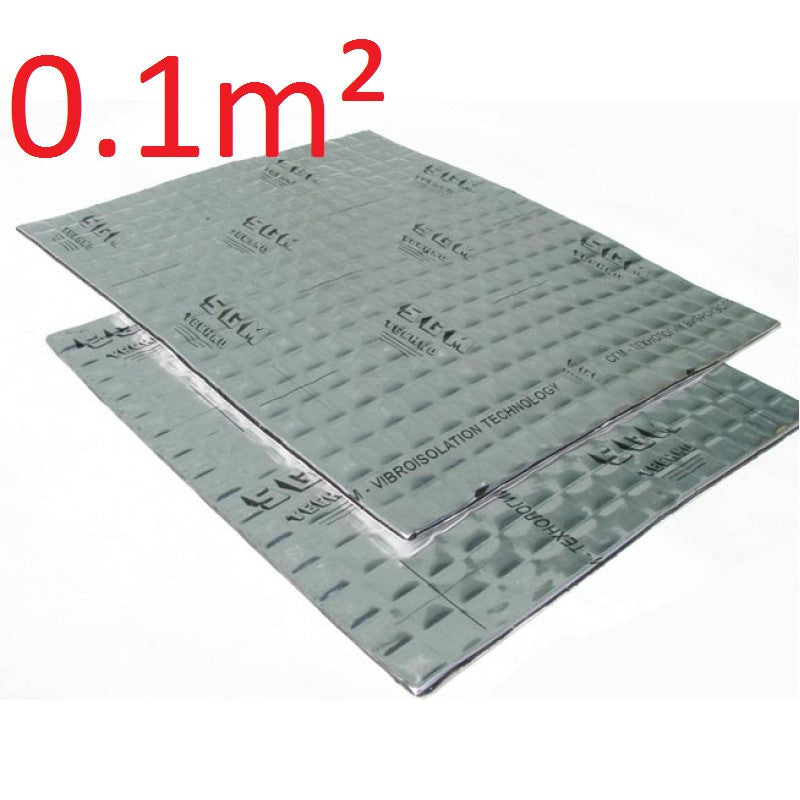The new generation vibroisolation material is used as vibroisolation or for the acoustic preparation of the car.
The new composition of the material gave the material hardness, as a result of which the material has exceptionally good vibration-isolation properties, which makes the construction easier by up to 25%. After changing, the material becomes flexible, has good adhesion to metal.
This vibration insulation material is resistant to moisture, has sealing and anti-corrosion properties, during installation the material must be heated to 35 - 40 oC.
The mechanical loss coefficient of the material is 0.4. What is this?
The body of the car resonates when driving or simply when the engine is working - it emits vibrations. Ideally, the body surface materials should absorb the vibration and convert it into thermal energy. The mechanical loss coefficient, MNK, shows how much vibrational energy is exchanged for heat. Driving comfort depends on it. If MNK is 1 - this is the maximum result, all the vibrational energy is replaced by heat. If MNK <1, the sound and vibration absorption properties of the material are worse. When choosing an insulating material, you should pay attention to this number. A higher number is better.
Why should you try soundproofing materials?
They ensure additional comfort during the trip. Less vibration is felt while driving, there are no squeaks caused by parts touching each other, no extraneous noise from the street or the engine compartment. Talking in the car becomes easier, less tiring, nothing distracts attention while driving. Since these materials also act as a heat insulator, it is easier to start the engine in winter, and the interior freezes less. Almost the entire body of the car can be lined with insulating materials, thus ensuring the greatest effect.
Recommended: car doors, bottom, roof, body sides, hood, trunk lid, engine-cabin partition from the cabin side, plastic cabin parts. You should avoid installing close to parts of the car that get very hot - engine, collector, muffler.




